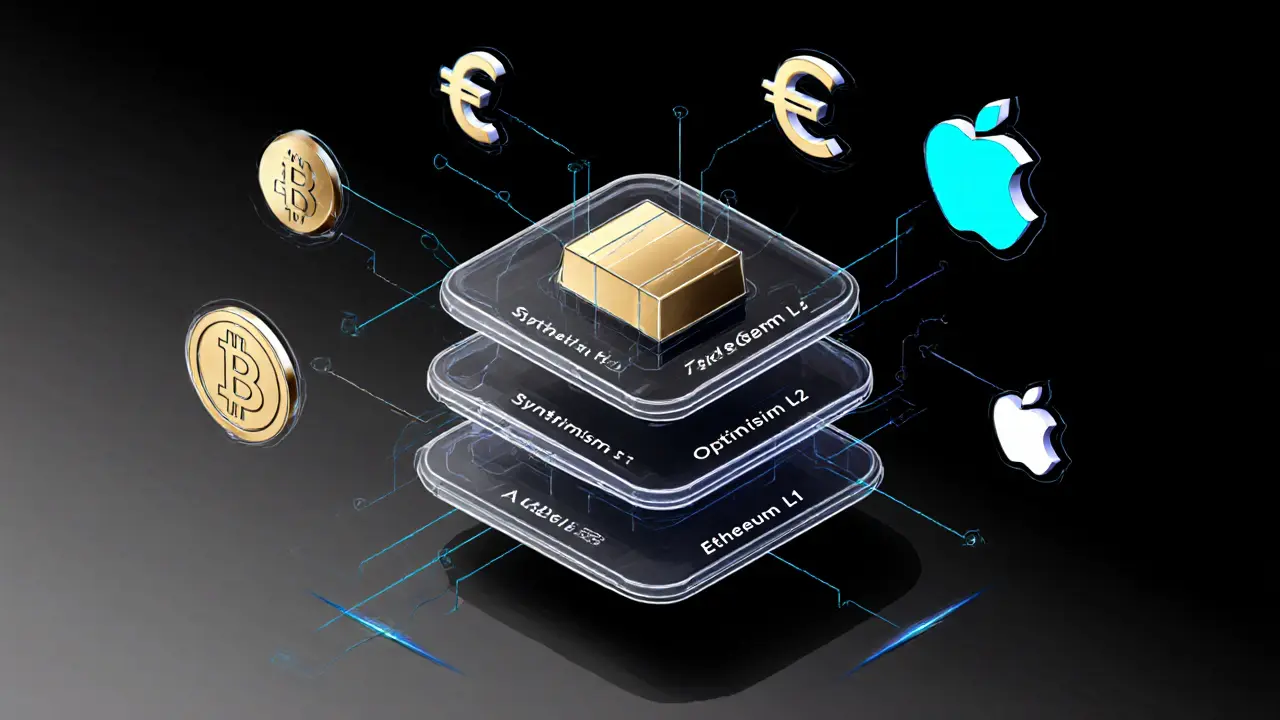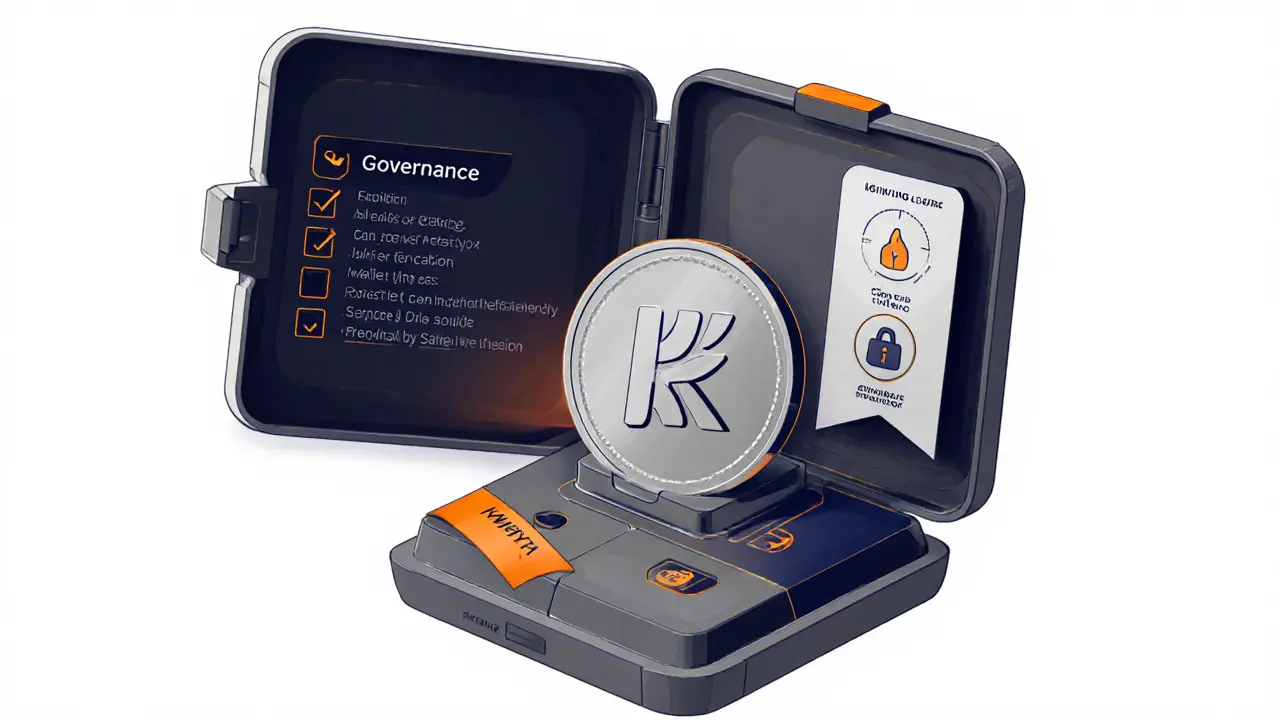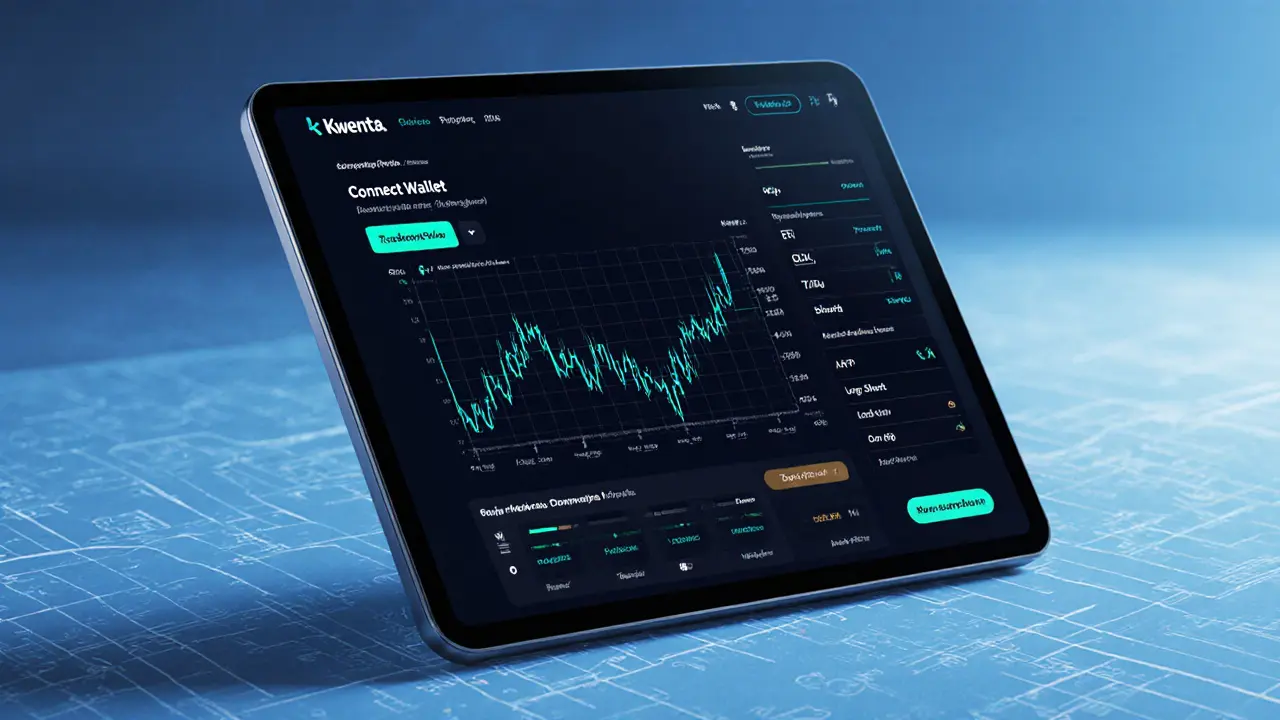Kwenta Trading Simulator
About Kwenta
A decentralized derivatives platform using synthetic assets. Trade perpetual futures on crypto, commodities, forex, and equities without custodial risk.
Key Features
- Non-custodial trading
- Perpetual futures
- Up to 10x leverage
- Low gas fees on Optimism
Trade Simulation
Simulation Results
Position Details
Asset: Bitcoin (BTC)
Position: Long
Leverage: 3x
Trade Amount: $1,000
Potential Outcome
Price Change: +5%
Fee: $0.00
Potential Profit/Loss: $0.00
Final Balance: $0.00
Risk Warning
Leveraged trading involves significant risk. Potential losses can exceed initial investment. This simulation is for educational purposes only.
TL;DR
- Kwenta is a non‑custodial platform for synthetic crypto, commodity, forex and equity futures.
- Runs on Optimism (L2) and Ethereum (L1) for low fees and fast settlement.
- Leverages the Synthetix protocol to mint & settle synthetic assets.
- KWENTA token fuels governance and offers modest staking rewards.
- Competes with Hyperliquid and dYdX; offers a steeper learning curve but higher decentralization.
What Is Kwenta?
When you hear about Kwenta is a decentralized derivatives trading platform built on the Synthetix protocol, the first thing to notice is its non‑custodial nature. Unlike Binance or Coinbase, Kwenta never holds your funds. All positions are settled on‑chain, meaning the smart contracts execute trades and settle profits or losses automatically.
The platform’s core promise is to let anyone trade perpetual futures on synthetic representations of real‑world assets-think Bitcoin, gold, EUR/USD, or Apple stock-without needing a broker licence or a traditional margin account.
Kwenta review focuses on whether this promise translates into a usable product for everyday traders.
How Kwenta Works Under the Hood
Kwenta’s architecture rests on three main building blocks:
- Synthetix protocol: Provides the synthetic asset (synth) model that mirrors price movements of real markets.
- Optimism (Layer2): Handles most daily trading to keep gas under $0.01 per transaction.
- Ethereum (Layer1): Serves as the security backbone; any settlement finality ultimately rolls up to the Ethereum mainnet.
When you open a trade, Kwenta smart contracts lock up the required amount of collateral (usually USDC or sUSD) and mint a synthetic position. The price feed comes from Chainlink oracles, ensuring the synth mirrors the underlying asset within a 0.5% tolerance.
Because the platform is permissionless, you only need a compatible wallet-MetaMask, Rainbow, or Ledger. Once connected, the UI guides you through approving the contract to spend your collateral, then you can go long or short with the chosen leverage.
Trading Features - What You Can Do on Kwanta
Kwenta supports a growing list of assets, grouped into four categories:
- Cryptocurrencies (BTC, ETH, SOL, etc.)
- Commodities (Gold, Silver, Oil)
- Forex pairs (USD/EUR, GBP/JPY)
- Equities (Apple, Tesla, Amazon - all synthetic)
All assets are traded as perpetual futures, meaning there is no expiry date. You can adjust your margin, add to a position, or close it at any time. Leverage options are not publicly disclosed in a fixed table, but community reports suggest up to 10× for most synths, with higher ratios for high‑liquidity crypto pairs.
The platform also offers a native KWENTA token. Holding KWENTA gives you voting power in protocol upgrades and a share of the trading fee pool. Staking can earn roughly 2-4% APR, depending on the fee revenue distribution for the month.

User Experience, Fees & Security
From a UI perspective, Kwenta feels like a hybrid between a traditional charting platform (TradingView‑style charts) and a DeFi dashboard. The landing page greets you with a clean “Connect Wallet” button, after which the “Trade” tab appears. Beginners may stumble over the “Approve” transaction step, which is a common hurdle on any DeFi app.
Fee structure is straightforward:
- Trading fee: 0.1% taker, 0.05% maker (rebated in KWENTA).
- Funding fee: Paid every 8hours based on the long/short rate imbalance.
- Gas: Optimism L2 keeps it sub‑$0.01 for most actions; an Ethereum L1 settlement will cost $2-$5 depending on network load.
Security-wise, Kwenta inherits Synthetix’s audited contracts. The last major audit (July2024) found no critical vulnerabilities. Nevertheless, being a fully on‑chain product means “bugs = lost funds” if a smart contract exploits a loophole. Users should always test with a small amount first.
How Kwenta Stacks Up - Comparison Table
| Feature | Kwenta | Hyperliquid | dYdX |
|---|---|---|---|
| Core Protocol | Synthetix (synthetic assets) | Proprietary L2 | StarkEx (ZK‑rollups) |
| Leverage Range | Up to 10× (most synths) | Up to 50× | Up to 25× |
| Asset Coverage | Crypto, commodities, forex, equities (synthetic) | Crypto only | Crypto + select indices |
| Custody | Non‑custodial (on‑chain) | Non‑custodial | Hybrid (custodial for fiat) |
| Gas Fees | Optimism L2: <$0.01 per tx | Proprietary L2: <$0.02 per tx | StarkEx L2: <$0.01 per tx |
| Governance | KWENTA token‑based voting | Team‑driven roadmap | DAO (DYDX token) |
| Learning Curve | Medium - wallet + approvals | Low - familiar UI | Medium - requires collateral token |
KWENTA Token Outlook - What the Numbers Say
Analysts from 3Commas, LiteFinance and TradingBeasts converge on a narrow price band for 2025. The consensus range sits between $11.72 (low) and $13.07 (high), with an average projection near $12.40 per token. These estimates assume steady adoption of synthetic assets and no major regulatory clamp‑down.
Long‑term forecasts are wildly split. Some models, like PricePrediction.net, still see upside toward $19‑$25 by 2027, while others (WalletInvestor) predict a steep drop to under $2 by 2030 if DeFi liquidity dries up. The key takeaway: short‑term price stability looks plausible, but future value hinges on Synthetix’s roadmap and broader DeFi sentiment.
Pros, Cons & Quick‑Start Checklist
Before you jump in, weigh the following:
- Pros
- True non‑custodial trading - you own your collateral.
- Access to non‑crypto assets (gold, forex, equities) without a broker.
- Low L2 gas fees thanks to Optimism.
- Governance participation via KWENTA token.
- Cons
- Steeper onboarding - wallet setup and contract approvals required.
- Leverage caps lower than some centralized rivals.
- Liquidity can be thin on niche synths, leading to higher slippage.
- Transparency of volume is limited (untracked on CoinMarketCap).
Quick‑Start Checklist
- Install a Web3 wallet (MetaMask recommended).
- Fund it with ETH (for gas) and USDC or sUSD (for collateral).
- Visit kwenta.io and click “Connect Wallet”.
- Approve the contract to spend your collateral (confirm the transaction on Optimism).
- Select an asset, choose leverage, and place a long or short order.
- Monitor funding rates and close or adjust position before liquidation.
Final Thoughts
If you value decentralization above ultra‑high leverage, Kwenta delivers a solid on‑chain experience. The platform’s synthetic asset model fills a niche that most centralized exchanges can’t match - you can short gold or long Apple without ever leaving the blockchain. However, the learning curve and occasional liquidity gaps may deter casual traders who just want to flip Bitcoin.
Overall, Kwenta scores a respectable 4.0/5 from the limited user base that has tried it. As the Synthetix protocol matures and Optimism’s ecosystem expands, the platform could become a go‑to hub for diversified DeFi exposure.

Frequently Asked Questions
Is Kwenta a centralized exchange?
No. Kwenta is a fully decentralized, non‑custodial platform that runs on the Synthetix protocol and settles trades on‑chain.
Which wallets does Kwenta support?
MetaMask, Rainbow, Ledger, Trust Wallet and any wallet that can connect to the Optimism network.
How are fees calculated on Kwenta?
Trading fees are 0.1% for takers and 0.05% for makers, paid in the asset you trade. Funding fees are exchanged every 8hours. Gas fees are minimal on Optimism (often under $0.01).
Can I trade traditional stocks on Kwenta?
You can trade synthetic versions of stocks (e.g., sAAPL, sTSLA). They mirror price movements but are not actual equity holdings.
What is the role of the KWENTA token?
KWENTA grants governance voting rights, a share of fee revenue, and staking rewards. Holding it also reduces maker fees.

